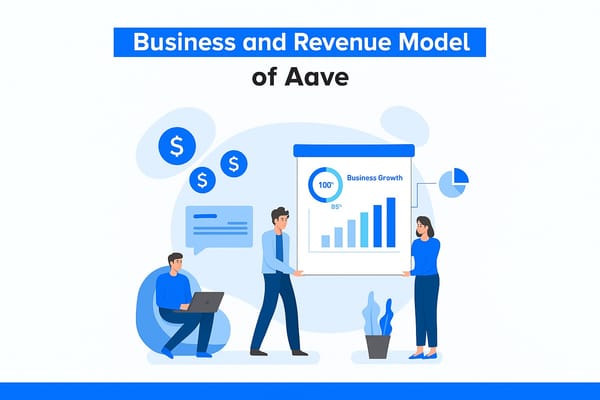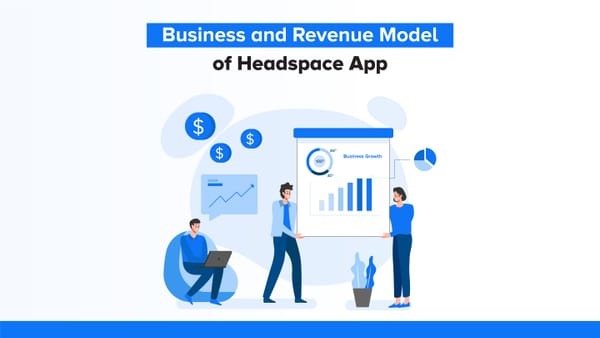How Duolingo Makes Money: The Business Model of the World’s Favourite Language App

Source: The Business Model Analyst
Twelve years ago, Duolingo entered the scene with a simple idea to make language learning free and fun for everyone.
Today, the numbers speak volumes:
- Duolingo pulled in $748 million in revenue as of 2024, a 40.8% year-on-year increase.
- Duolingo offers 100+ courses across 41 languages.
- With 950 million downloads, Duolingo leads language learning apps.
- Earned $607.5 million from its premium subscription.
- By Q4 2024, Duolingo had 9.5 million paid subscribers worldwide, up by around 43 per cent year-over-year.
- Duolingo surpassed 10 million paid DAUs subscribers and reported 38% year-over-year revenue growth in Q1 2025.
Duolingo Overview: What Makes It the World’s Favourite Language App
Seeing that cheerful green owl, Duo, probably brings back memories of a quick Spanish lesson over coffee or a late-night reminder to keep your streak alive. Duolingo has made language learning feel personal, playful, and consistent. It's a giant powerhouse of learning language lessons straight to your device, turning smartphones into a classroom that feels more like a game than hitting the books.
At first glance, Duolingo might seem like just another fun language app, but its business model tells a much bigger story. The company runs on a freemium model: anyone can access the core features for free, but those seeking an ad-free experience or extra tools can upgrade to Super Duolingo or Duolingo Max. This tiered structure has allowed the platform to scale rapidly while staying accessible to a global audience.
What drives its success is a product that feels more like a game than a traditional classroom. Lessons are short, interactive and built with gamified features like streaks, levels, and reward points that are all designed to build consistent daily habits. That stickiness is what turns casual users into loyal learners and free users into paying subscribers.
Duolingo’s commitment to accessibility also plays a key role. With over 100 courses in more than 41 languages, including less commonly taught ones like Navajo, Hawaiian, and even fictional tongues like Klingon and High Valyrian from Game of Thrones, the platform attracts a diverse and global user base. By keeping its core offering free, Duolingo taps into a massive reach, and by layering premium options, it captures serious revenue without sacrificing its mission. Duolingo has figured out how to keep it to one notification, lesson, and streak at a time.
Duolingo didn’t stop at teaching languages with cute streaks and bite-sized lessons. It kept rolling out new features and content and even used AI to build courses faster and smarter. With every update, it quietly makes learning feel more intuitive and fun.
On April 5, 2025, Duolingo announced its biggest content expansion ever, launching 148 new language courses. This massive rollout offers more than double its current offerings and makes its seven most popular non-English languages (Spanish, French, German, Italian, Japanese, Korean, and Mandarin) available in all 28 supported UI languages, opening the door for over a billion potential learners around the world.
Source: The Business Model Analyst
Duolingo’s Global Rise
Source: Duolingo
Today, 1 out of every 4 people in the world is trying their hand at learning a new language. Whether for work, travel, personal growth, or simply connecting through a global language, more people are turning to digital platforms to get started. And the mobile-first approach of Duolingo has opened the door to language learning for everyone.
Duolingo’s global influence is stronger than ever in 2024. As the most downloaded language app, it's now shaping how people learn English in over 135 countries. In 2024, English became the most studied language in 135 countries, according to the latest Duolingo Language Report, which shows a 10% jump from last year. Duolingo launched a new entirely English course for advanced learners, especially for those whose native languages weren’t supported before. It’s already one of the top English courses in China, Mexico, and the U.S., proving that digital learning is breaking barriers like never before.
Source: Duolingo
Source: Duolingo
Source: Duolingo
Source: Duolingo
Source: Duolingo
The charts throughout show more than numbers as they reflect a shift in how the world learns. Today, language learning has moved beyond classrooms and textbooks, finding its place in our pockets, routines, and how we connect with others. Duolingo’s growth is more than a business story; it shows how people across countries and cultures embrace technology to build real-world skills. Whether it’s Gen Z preparing for a global career or someone learning a new language to feel closer to another culture, the motivation is personal. As AI and mobile-first platforms evolve, language is becoming one of the most powerful tools for navigating a world that no longer fits inside borders.
How Duolingo Makes Its Money
Duolingo may be known for offering free language lessons, but behind its friendly green owl is a smart business model. The company has built a multi-layered revenue stream by combining freemium learning with paid upgrades, ads, and innovative products. Here's how Duolingo turns its global learning platform into a profitable business.
Paid Subscriptions
Duolingo monetises a large part of its platform through paid subscriptions. As of 2024, more than 8.6 million users have subscribed to its premium plans, like Super Duolingo and Duolingo Max, which are available on a monthly or annual basis. These plans unlock added features like an ad-free experience, offline lessons and AI-powered learning tools that enhance the overall experience for serious learners.
Duolingo Language Certification Test
Duolingo generates revenue through its paid language certification tests. The most popular is the Duolingo English Test (DET), which offers a flexible option for users to certify their English remotely. Because it’s accepted by leading universities, employers, and immigration programs worldwide, many learners rely on it to prove their proficiency. Each test attempt requires a fee, creating a steady and growing income stream for Duolingo.
In-App Purchase
Duolingo offers a range of in-app purchases, which include additional content that keeps learners engaged. The app generates revenue through in-app purchases of its virtual currency, known as “Gems.” Users can earn or buy Gems to unlock power-ups like extra hearts, streak freezes, and fun customisations within the app. It’s a simple way to keep users engaged while adding a steady boost to Duolingo’s revenue.
Institutional Partnerships
Duolingo is earning serious credibility in global education. Its English Test has seen explosive adoption and is now accepted by over 5,500 universities in 100+ countries, including top-tier institutions like Harvard, MIT, Stanford, Yale, and Imperial College London. It’s become a popular choice for students aiming to study abroad, as in 2024, 270,000 indian students enrolled in U.S. universities.
Ads and Partnerships
Duolingo’s free plan comes with a smart trade-off—short ads between lessons. If you're on the free tier, you've probably noticed them. These ads promote language-learning apps and related services, providing steady ad revenue. Ads appear between lessons, offering companies a chance to promote their products. This stream of ad revenue creates a noticeable chunk for Duolingo to stay profitable.
Source: The Business Model Analyst
Conclusion
Duolingo has transformed language learning by making world-class education accessible to millions. Staying true to its mission to deliver the best education globally and make it universally available, it has built a platform that blends innovation with simplicity. Through smart use of AI, data, and a flexible freemium model, Duolingo has attracted over 10 million paid subscribers and continues to grow rapidly. This success story proves that with the right vision and technology, education can break barriers and connect people worldwide.




